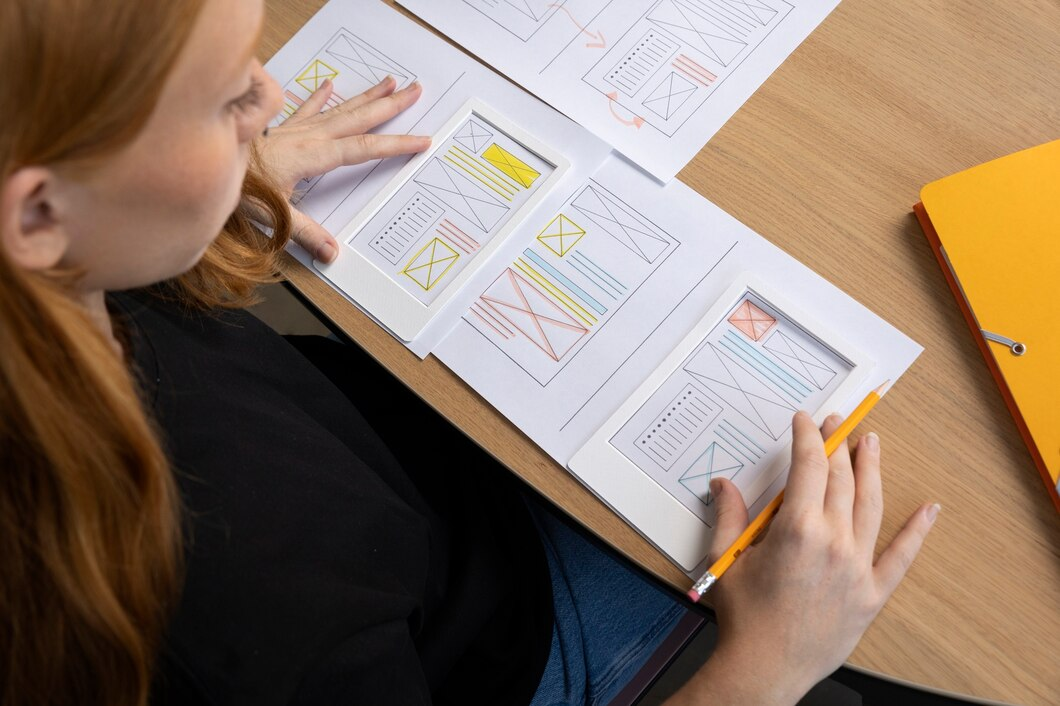
Services
In UX (User Experience) design, empathy is key to making digital experiences that everyone can use and enjoy. This means really getting what different users need, especially those with disabilities.
When designers put empathy first, they can create websites and apps that not only look good but are also accessible for more people to use.
Here are some easy ways and tips on how to use empathy to make digital stuff easier for everyone to access:
-
Conduct User Research with Diverse Participants
Understanding is the starting point for empathy. In order to create digital products that are accessible, it is crucial to carry out user research involving a diverse range of participants, including those with different disabilities. This method allows designers to gather valuable insights into the specific obstacles that different users encounter.
Interacting directly with individuals who have disabilities can reveal distinct viewpoints and requirements that could easily be overlooked. -
Create Detailed Personas
Personas are fictional characters that reprsents different type of users. By developing personas that include individuals with disabilities, designers can keep these users' needs at the forefront throughout the design process.
For example, a persona might include a visually impaired user who relies on screen readers or someone with limited mobility who uses voice commands. These personas help ensure that the design solutions are inclusive. -
Empathy Mapping
Empathy mapping is a tool for visualizing what users are thinking, feeling, saying, and doing. By creating empathy maps for users with disabilities, designers can better understand their experiences and frustrations. This process encourages designers to consider their design decisions' emotional and psychological impacts, leading to more compassionate and practical solutions.
-
User Journey Mapping
User journey maps outline the steps a user takes to complete a task, highlighting pain points and areas for improvement. When creating these maps, it's crucial to include scenarios involving users with disabilities. This approach helps identify specific barriers they may encounter and provides a roadmap for creating more accessible user experiences.
-
Inclusive Design Principles
Leveraging inclusive design principles ensures that accessibility is a core design process component. These principles include flexibility in use, simple and intuitive design, and perceptible information. By following these principles, designers can develop accessible products to a diverse spectrum of users, irrespective of their abilities.
-
Accessibility Testing
Empathetic UX design requires thorough testing with real users, including those with disabilities. Accessibility testing should be a fundamental component of the development process. Incorporating assistive technologies, such as screen readers, voice recognition software, and alternative input devices is crucial for pinpointing and resolving accessibility issues that require attention. Feedback from users with disabilities is invaluable in refining the design.
-
Education and Training
Educating the design team about different disabilities and their associated challenges fosters empathy and awareness. Workshops, seminars, and training sessions can help team members understand the importance of digital accessibility and learn practical ways to implement it in their designs.
Encouraging continuous learning about digital accessibility standards, such as the WCAG to ensure that your team stay updated on best practices. -
Clear and Simple Communication
Designing with empathy involves creating content that is easy to understand and navigate. This includes using clear, simple language and avoiding jargon. Visual elements like icons and images, should have descriptive alt text to aid users who rely on screen readers.
In addition, making sure that content is organized logically and presented in a straightforward manner helps all users, especially those with cognitive disabilities. -
Keyboard Navigation
Many users with disabilities rely on keyboard navigation rather than a mouse. Making sure that all interactive elements on a website or app can be accessed and operated using a keyboard is a critical aspect of accessibility. Designers should create a logical tab order and provide visible focus indicators to efficiently guide users through the interface.
-
Continuous Improvement and Feedback Loops
Empathy in UX design is an ongoing commitment. Establishing continuous improvement and feedback loops ensures that accessibility is consistently addressed. Regularly reviewing feedback from users with disabilities and making iterative updates based on their input keeps the design relevant and user-centric.
Monitoring user behaviour and responding to new accessibility challenges is key to maintaining an inclusive digital environment.
Empathy in UX design helps create digital experiences that everyone can use, including people with disabilities. It makes websites and apps easier to navigate and engage with.
Conclusion
Integrating empathy within UX design is critical for developing accessible digital products that promote inclusivity and empowerment. By acknowledging and catering to the needs of users with disabilities, designers can create practical solutions that foster a sense of belonging.
By adopting inclusive user research and establishing ongoing feedback mechanisms, empathy-rooted designs can improve accessibility and create a more just digital environment.
Explore more about creating accessible and inclusive digital experiences at AccessifyLabs.
Let’s Have a Conversation
Are you looking for accessibility solutions for your
organization? We make accessibility effortless.




